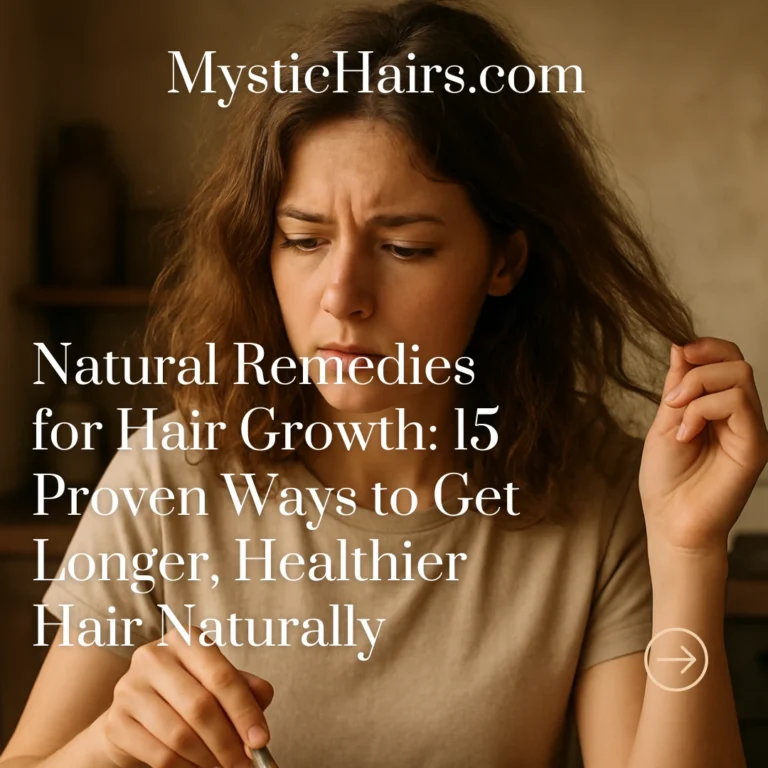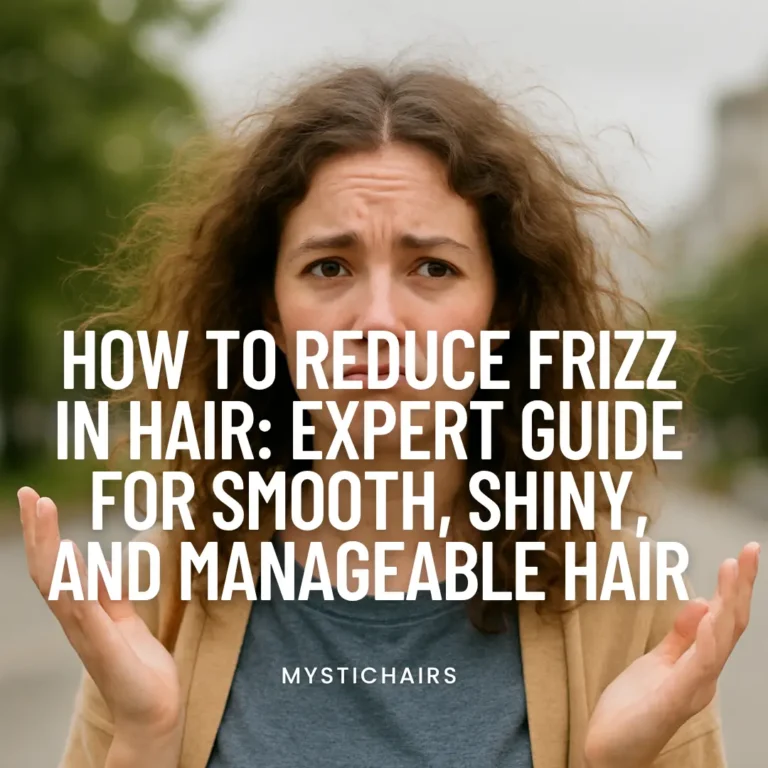How to Stop Thinning Hair in Women: 15 Effective Solutions for Healthier, Fuller Strands
Hair thinning is a common concern for women of all ages, and it can be caused by a variety of factors, including hormonal changes, stress, nutrient deficiencies, and genetics. Understanding how to stop thinning hair in women starts with identifying the root cause and then adopting a targeted approach to restore strength and volume. While medical treatments are available, many women see significant improvement through a combination of lifestyle adjustments, scalp care, and nutrient-rich hair products.
How to Stop Thinning Hair in Women
From incorporating hair-boosting vitamins to using gentle styling techniques, there are multiple strategies that can help restore fullness. This guide will walk you through some of the most effective methods, blending both professional advice and natural remedies, so you can feel confident and in control of your hair’s health again.
1. Maintain a Balanced Diet
One of the most overlooked solutions for how to stop thinning hair in women is nutrition. Your hair needs protein, iron, zinc, and vitamins A, C, D, and E to grow strong and healthy. Deficiencies in these nutrients can weaken hair follicles, causing excessive shedding and slower regrowth. Include foods like lean meats, eggs, leafy greens, nuts, and berries in your diet to give your strands the fuel they need.
If you struggle to meet your nutritional needs through food alone, consider a women’s hair growth supplement that contains biotin and collagen. These nutrients are essential for building keratin—the protein your hair is made of. Over time, a nutrient-rich diet supports thicker, shinier, and stronger hair from root to tip.
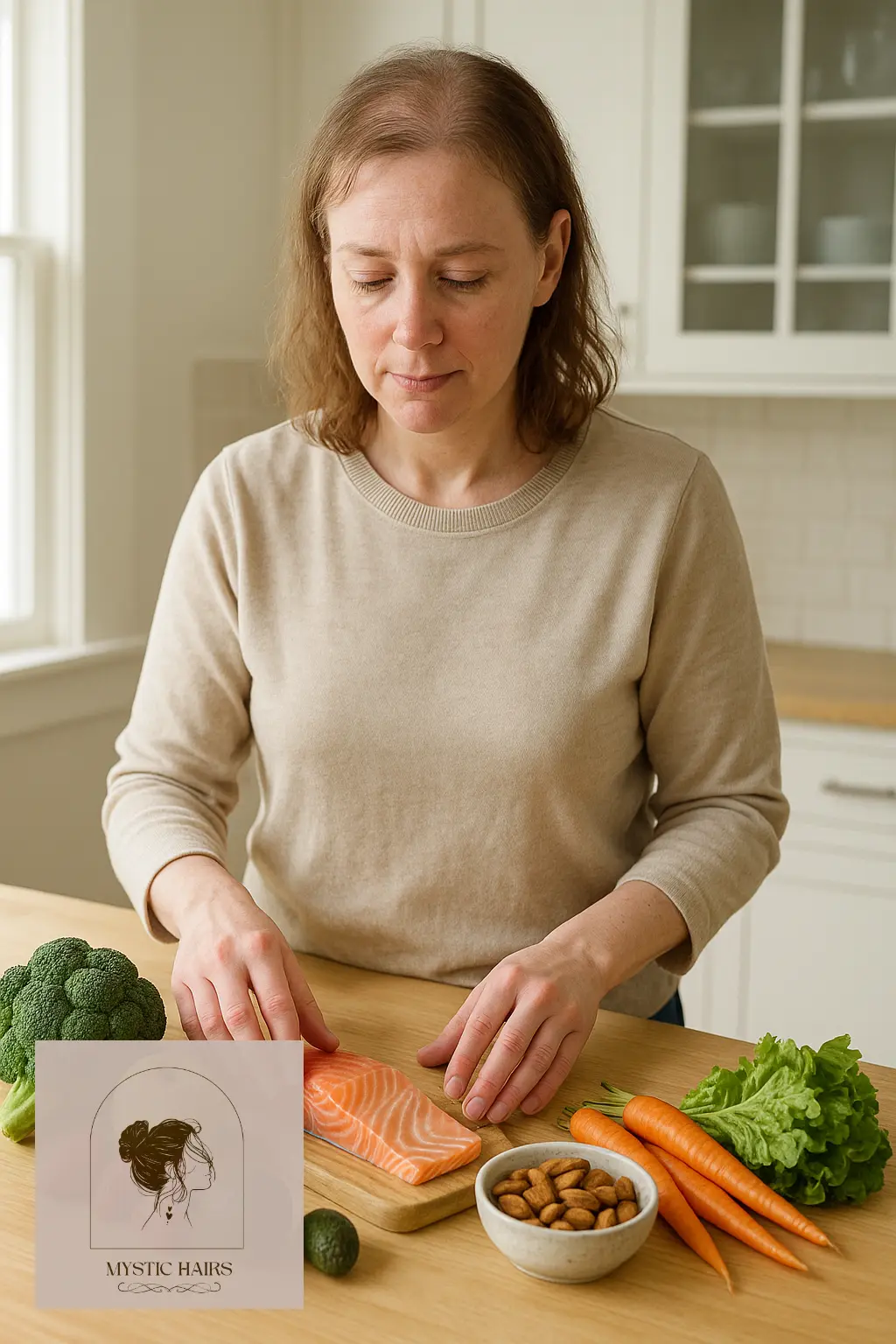
2. Reduce Heat Styling
Excessive use of curling irons, straighteners, and blow dryers can cause dryness and breakage, worsening hair thinning. A crucial part of female hair loss prevention is minimizing heat damage. Instead of using heat daily, try air-drying your hair or using no-heat styling methods such as braids and rollers.
When heat styling is necessary, always apply a thermal protectant spray to create a barrier between your hair and the heat source. This helps preserve your hair’s natural moisture and prevents cuticle damage that can make thinning more noticeable.
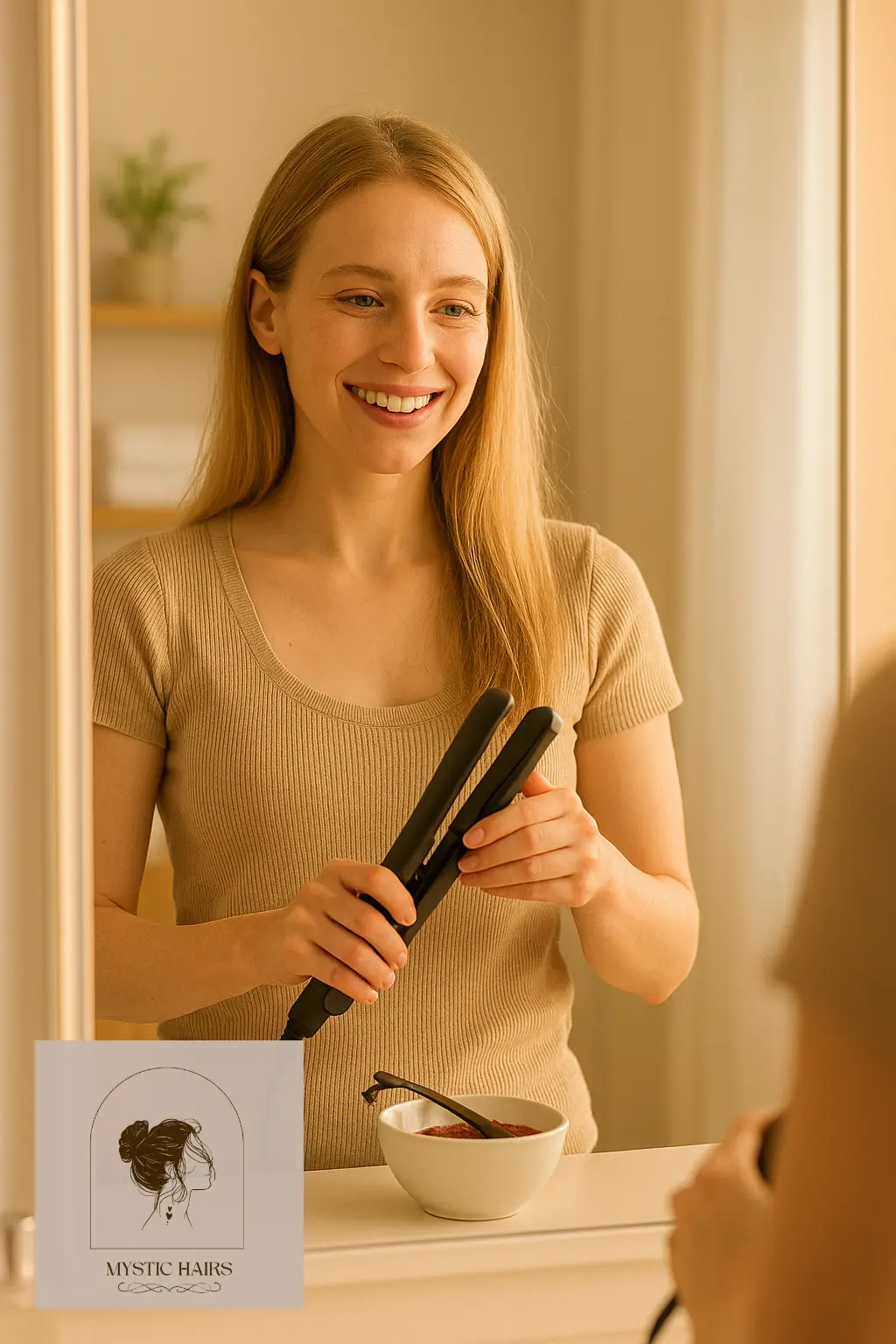
3. Use a Gentle Shampoo and Conditioner
Harsh shampoos with sulfates strip your hair of its natural oils, leaving it brittle and prone to breakage. If you’re learning how to stop thinning hair in women, switching to a gentle, sulfate-free shampoo and a hydrating conditioner is key. Look for formulas with keratin, argan oil, and aloe vera to strengthen and nourish strands.
Also, avoid overwashing—2–3 times per week is often enough for most women. This allows your scalp to maintain a healthy balance of natural oils, which act as a protective layer for your hair follicles.
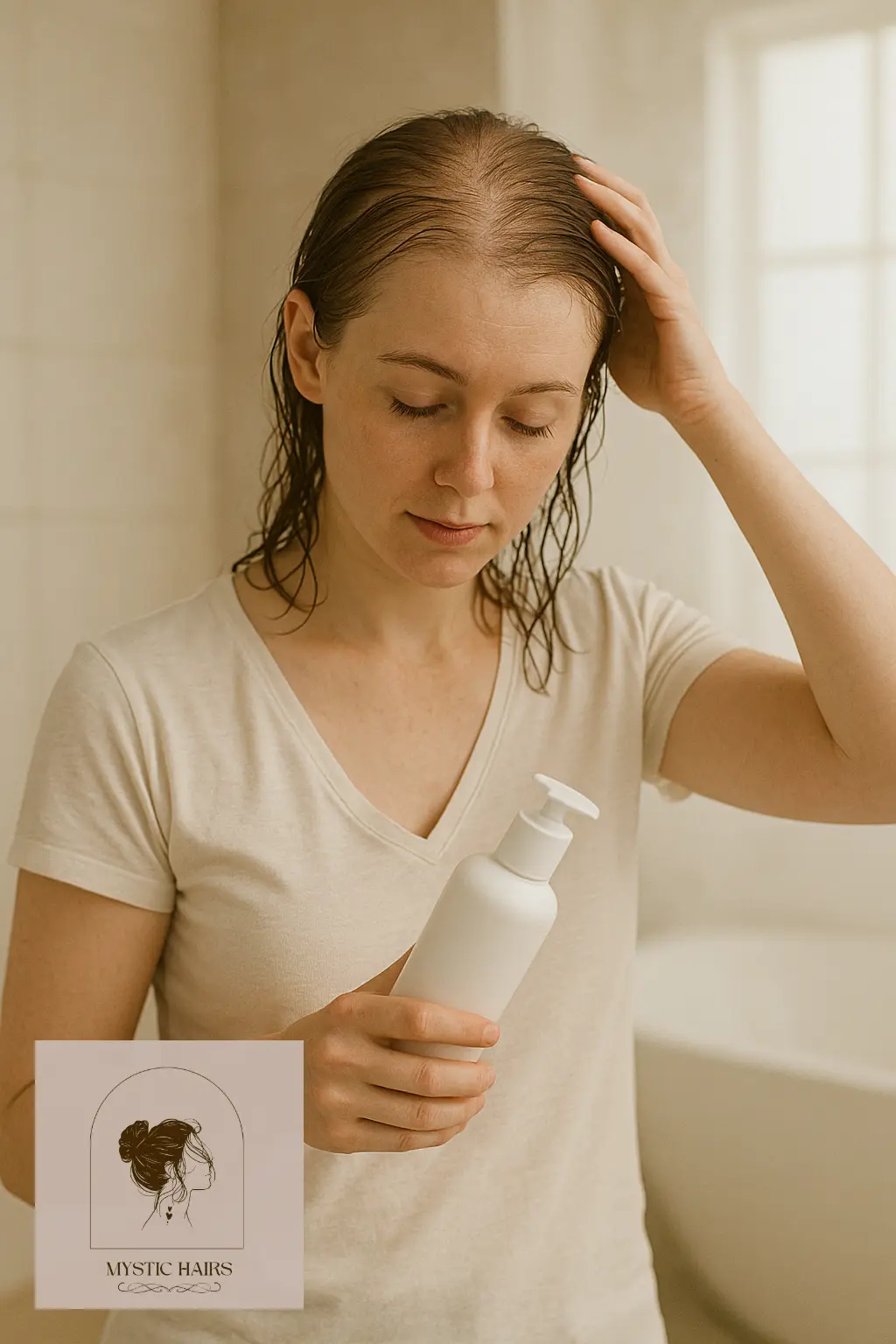
4. Massage Your Scalp Regularly
Scalp massages are an easy, cost-free way to stimulate blood flow to the follicles, which encourages thicker hair growth. Using your fingertips, gently massage your scalp for 5–10 minutes daily. This is one of the simplest natural remedies for thinning hair in women that delivers real results.
For an added boost, use natural oils like rosemary or peppermint oil during your massage. Both have been shown to stimulate follicle activity and improve scalp health, leading to stronger, healthier strands over time.
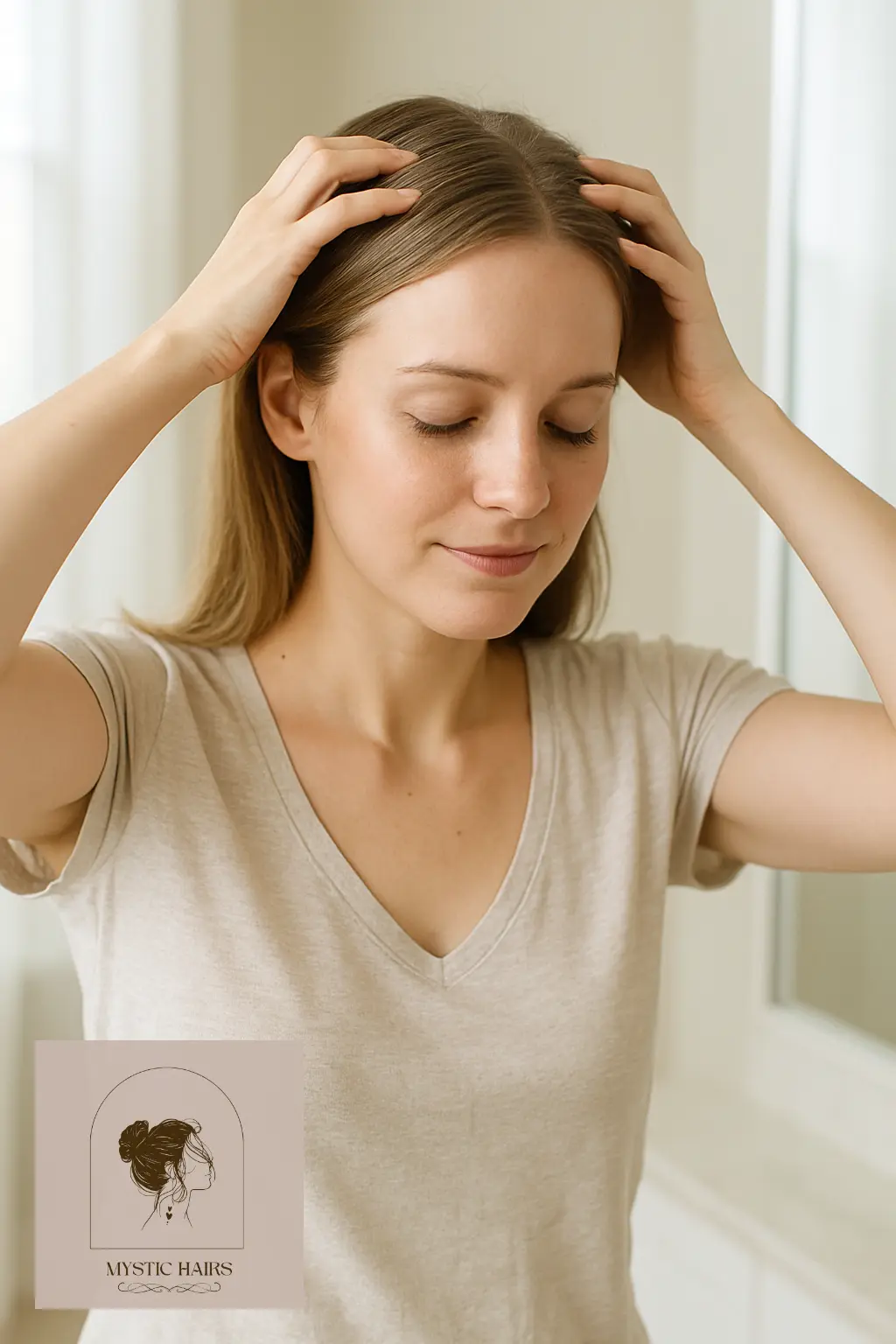
If thinning hair is paired with dandruff, the irritation and scalp buildup can make the problem worse. Learning how to get rid of dandruff not only restores comfort but also creates a healthier scalp environment where hair can grow stronger.
5. Manage Stress Levels
Stress is a significant contributor to female hair thinning because it can disrupt your hair’s natural growth cycle. Chronic stress triggers a condition called telogen effluvium, where hair prematurely enters the shedding phase. To manage stress, incorporate activities like yoga, meditation, or even daily walks into your routine.
Taking time for self-care not only benefits your mental health but also supports hormonal balance, which is vital for healthy hair growth. Consistently practicing stress-reduction techniques can noticeably reduce shedding within a few months.
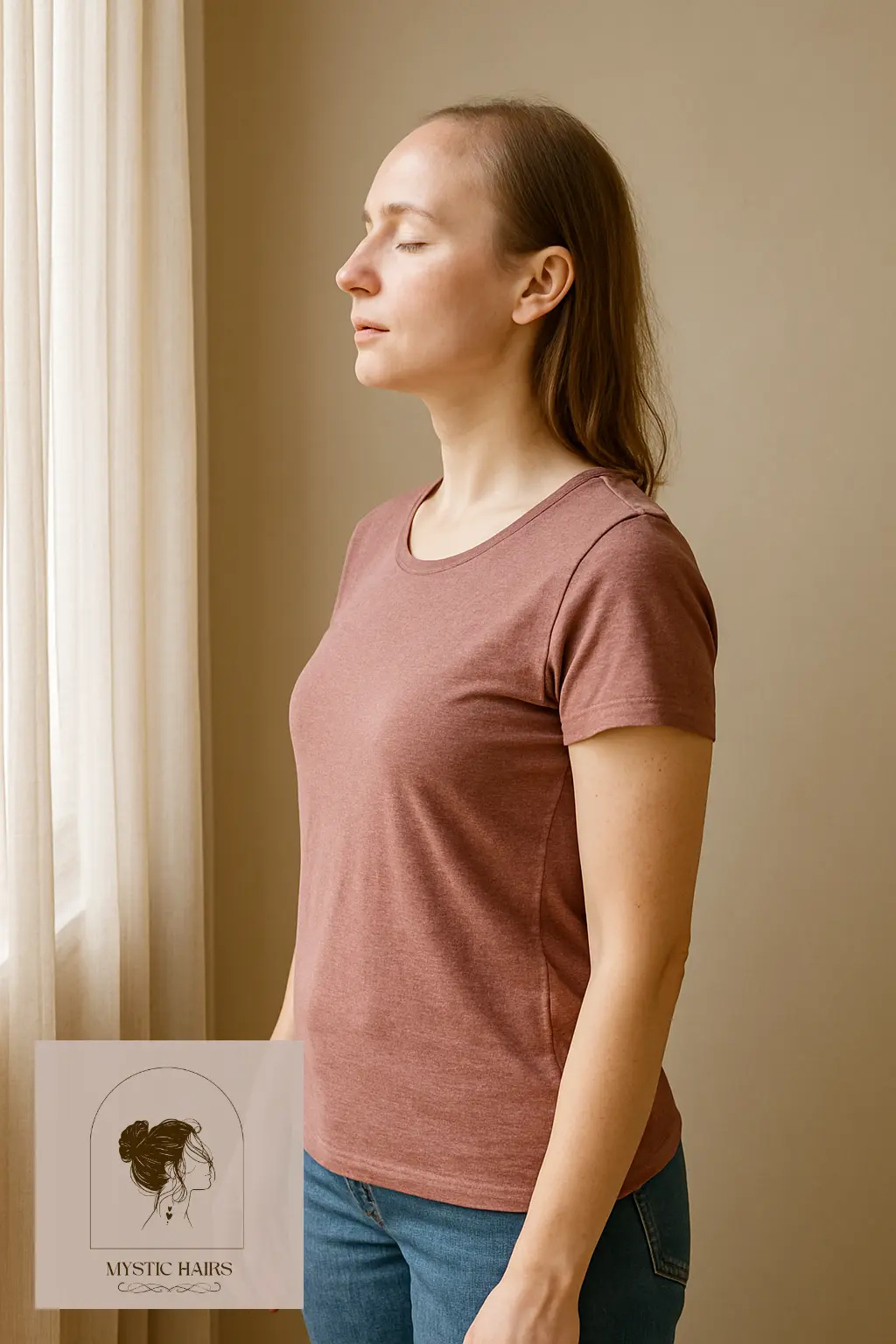
6. Avoid Tight Hairstyles
Wearing your hair in tight ponytails, braids, or buns can cause a condition called traction alopecia, which weakens the follicles over time. If you’re looking for how to stop thinning hair in women, switching to looser hairstyles can help prevent unnecessary pulling and breakage. Elastic bands that tug on the scalp can damage hair shafts and make thinning more noticeable.
Instead, opt for soft scrunchies or fabric-covered hair ties, and alternate your hairstyle each day to avoid repeated stress on the same areas. This simple change can protect fragile hair from long-term damage while giving it the chance to grow back stronger.
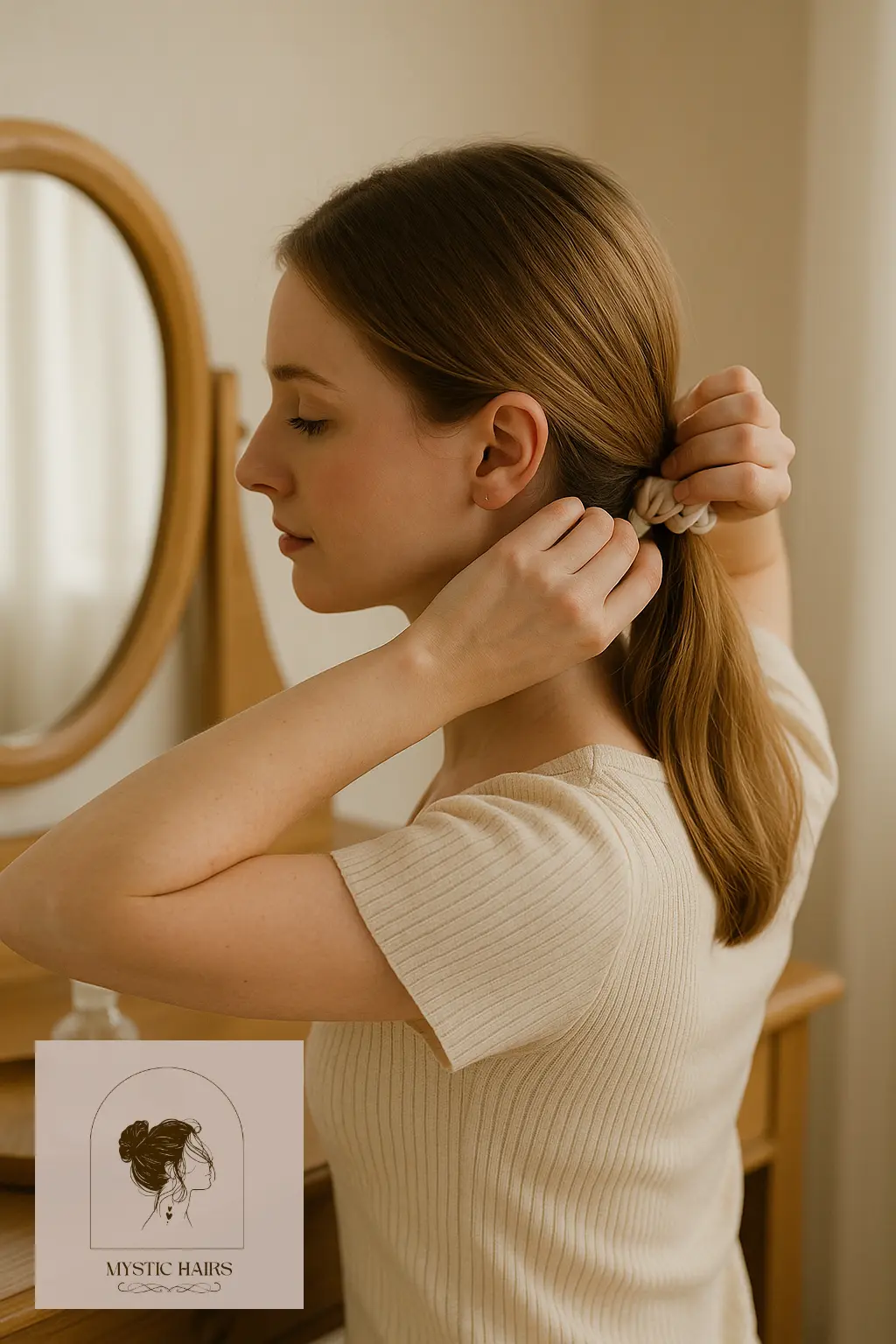
7. Choose Hair Products with Strengthening Ingredients
When learning how to stop thinning hair in women, product choice matters. Look for shampoos, conditioners, and leave-in treatments containing biotin, keratin, collagen, and niacinamide. These ingredients reinforce the hair shaft, improve elasticity, and reduce breakage over time.
Avoid products with heavy silicones and harsh alcohols that can cause buildup or dryness. Consistently using strengthening formulas helps restore hair resilience, especially if you’re also making lifestyle changes to support healthy growth.
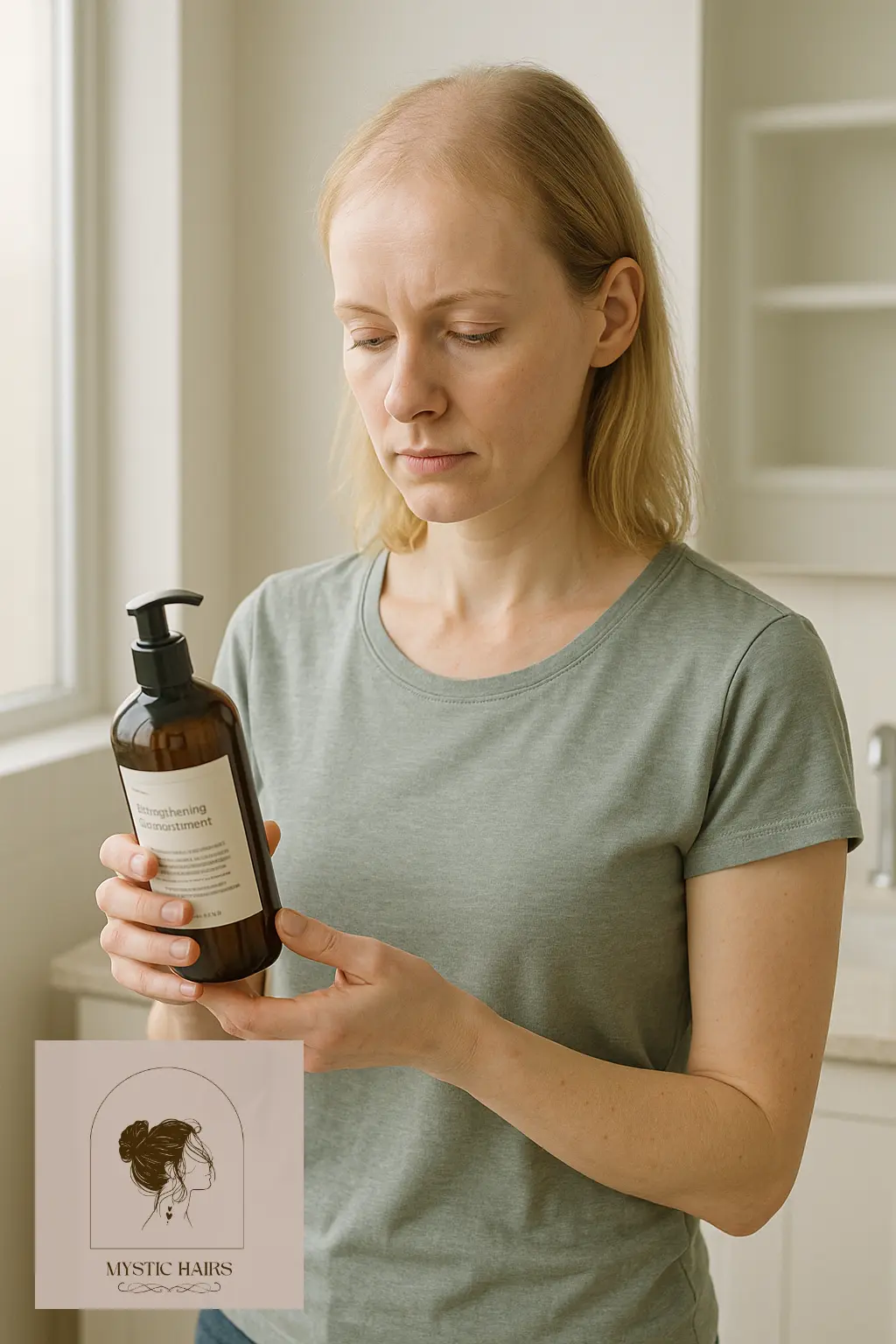
8. Try Essential Oils for Hair Growth
Natural oils can play a major role in female hair loss prevention. Rosemary oil, for example, has been shown in studies to stimulate hair growth as effectively as some medicated treatments. Peppermint oil increases scalp circulation, while lavender oil has calming properties that reduce stress-related shedding.
To use, dilute a few drops of your chosen essential oil in a carrier oil like jojoba or coconut oil. Massage it into your scalp for at least 5–10 minutes before washing your hair. Over time, this can strengthen follicles and encourage thicker regrowth.
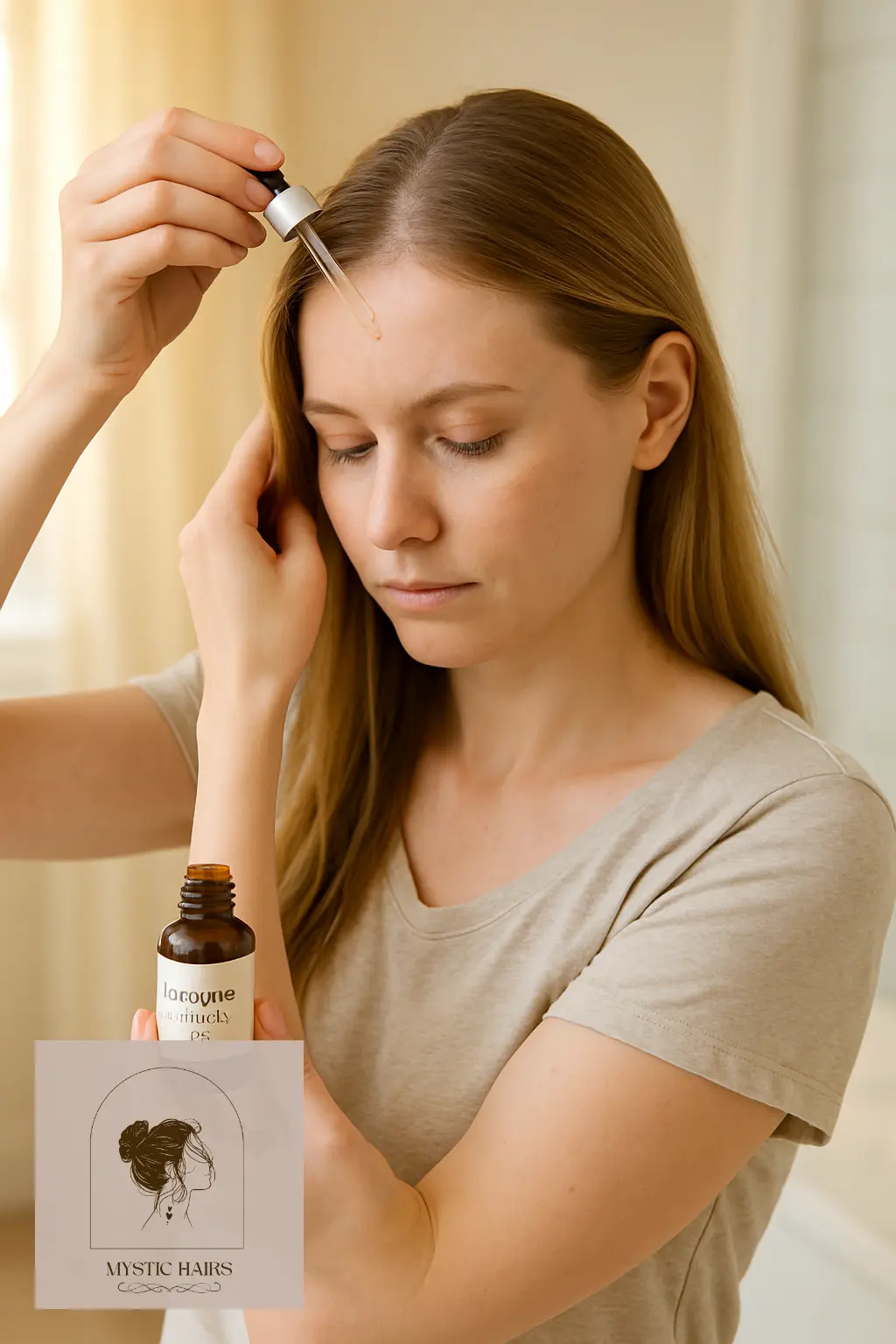
9. Take Hair Growth Supplements
Sometimes diet alone isn’t enough to address thinning hair, especially if deficiencies are significant. Supplements containing biotin, collagen peptides, folic acid, and vitamin D can be a game changer for how to stop thinning hair in women. These nutrients promote keratin production and improve follicle function.
Always choose high-quality supplements from reputable brands and consult your doctor before starting. Consistency is key—most women notice results after 3–6 months of regular use when paired with a balanced diet.

Addressing thinning hair isn’t only about prevention — it’s also about encouraging regrowth. Exploring natural remedies for hair growth can provide gentle, effective ways to stimulate follicles and restore volume without harsh treatments.
10. Get Regular Trims
It might sound counterintuitive, but trimming your hair every 8–12 weeks can actually help it look fuller and healthier. Removing split ends prevents breakage from traveling up the shaft, which is crucial for female hair thickening solutions.
While trimming doesn’t make hair grow faster, it ensures that new growth isn’t overshadowed by damaged, frayed ends. This small step can make a big difference in maintaining the appearance of healthy, voluminous hair.
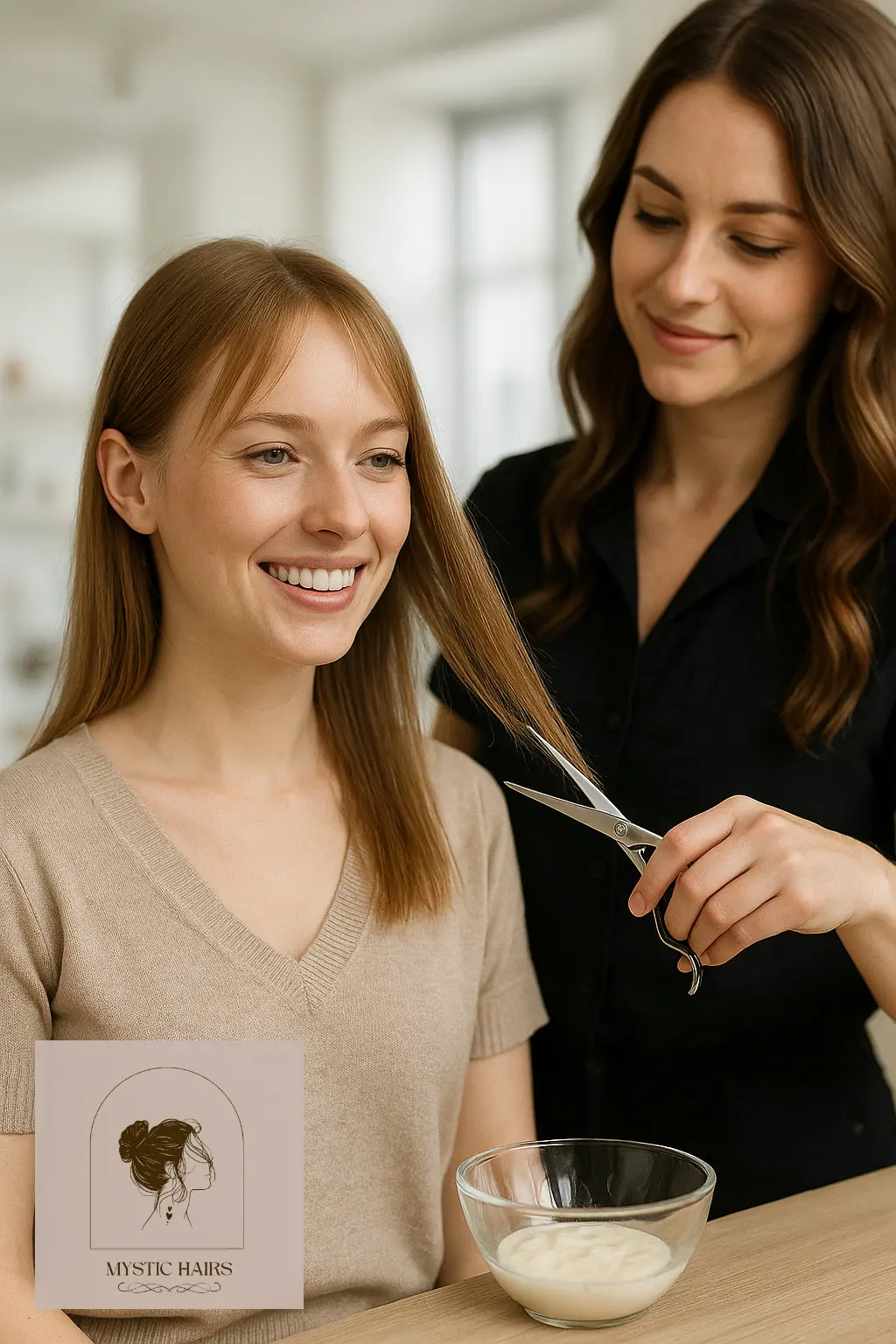
11. Sleep on a Silk Pillowcase
Cotton pillowcases can cause friction that leads to breakage and tangling, especially for fine or thinning hair. Switching to silk or satin pillowcases reduces friction, allowing your hair to glide smoothly while you sleep. This is a simple but effective step in hair loss prevention for women.
In addition to protecting hair from mechanical damage, silk also helps maintain moisture levels overnight, preventing dryness and frizz. This small luxury can be a big investment in your hair’s long-term health.
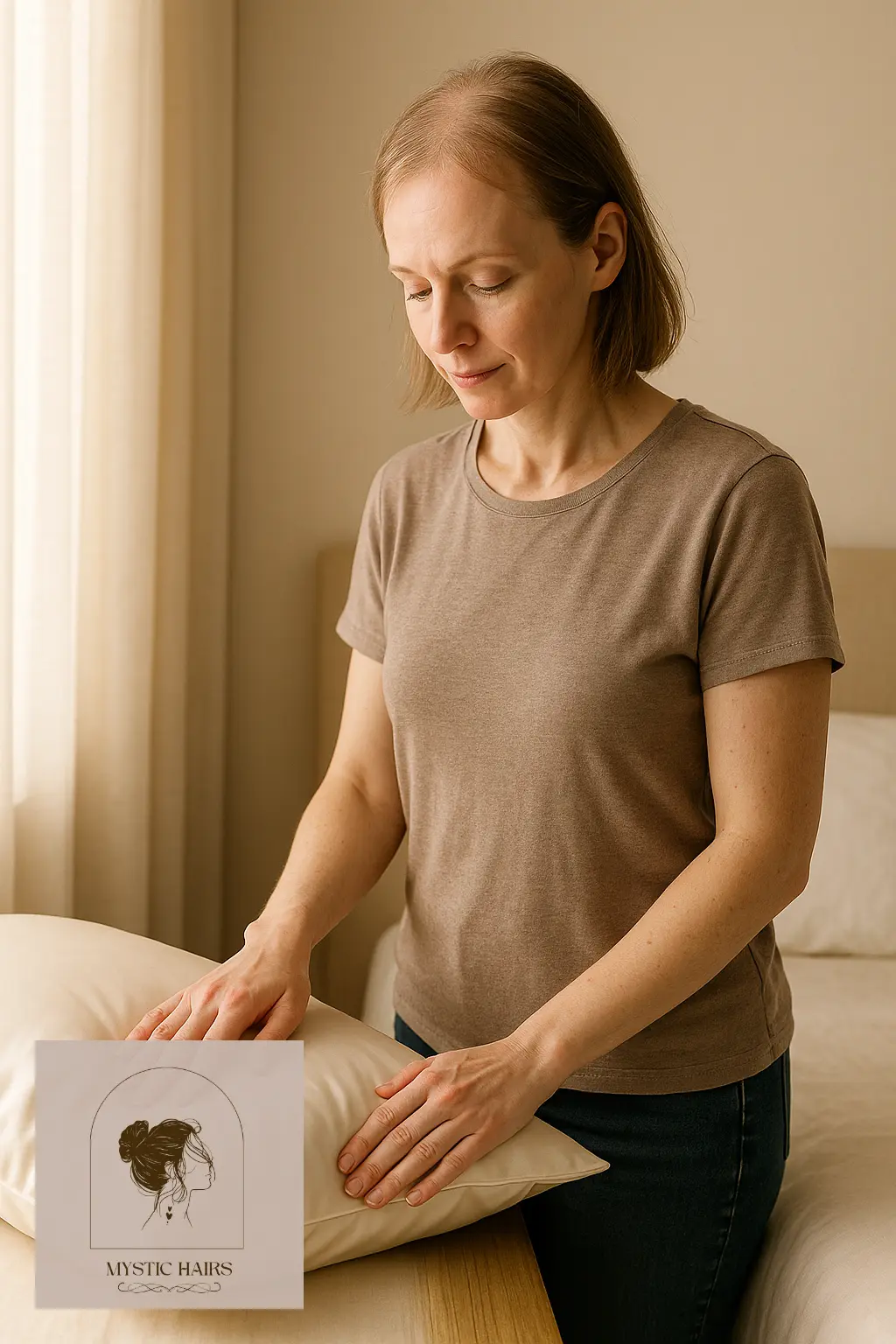
12. Stay Hydrated
Water plays a vital role in keeping your scalp and hair follicles healthy. Dehydration can make your hair brittle, dull, and more prone to breakage. If you’re exploring how to stop thinning hair in women, start by drinking enough water throughout the day to keep your body and scalp well-hydrated.
Pair hydration with moisture-rich hair products, like leave-in conditioners and hair masks, to maximize results. This combination keeps strands elastic and reduces the likelihood of snapping during brushing or styling.

Thinning strands often feel weaker and more fragile, which makes them prone to breakage. Understanding how to fix split ends without cutting is a smart way to protect what you already have while working on regaining fullness.
13. Limit Chemical Treatments
Frequent coloring, bleaching, and chemical straightening can weaken hair shafts, leading to increased thinning over time. To promote natural hair regrowth for women, space out chemical treatments and choose gentler alternatives whenever possible.
If you must color your hair, opt for ammonia-free formulas and deep condition regularly to restore moisture. Protecting hair from harsh chemicals allows follicles to focus on healthy regrowth instead of repairing damage.
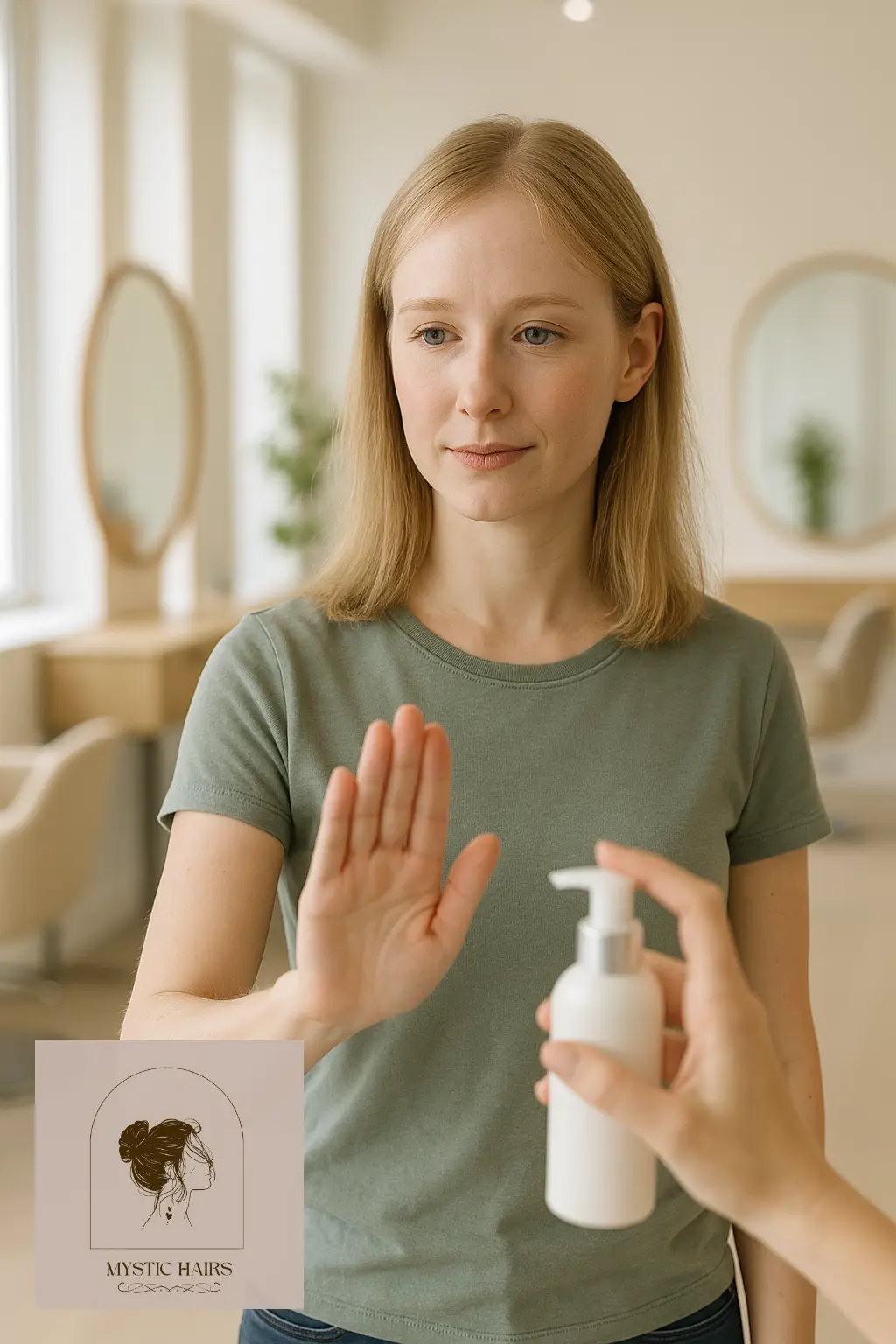
14. Protect Hair from UV Damage
Just like skin, hair can be damaged by prolonged sun exposure. UV rays weaken the hair’s protein structure, making it more prone to dryness and breakage. If you want to know how to stop thinning hair in women during summer, wear hats or use UV-protectant sprays when spending extended time outdoors.
These products form a shield around your strands, preserving their strength and preventing color fading. This is especially important for women with color-treated or already weakened hair.

15. Seek Professional Help Early
If you’ve tried multiple at-home remedies without improvement, it may be time to consult a trichologist or dermatologist. They can run tests to identify underlying causes like hormonal imbalances, nutrient deficiencies, or scalp conditions that contribute to hair loss.
Addressing these issues early increases the chances of regaining fullness. Professionals can also recommend targeted treatments such as PRP therapy, low-level laser therapy, or prescription medications for female hair thinning solutions.
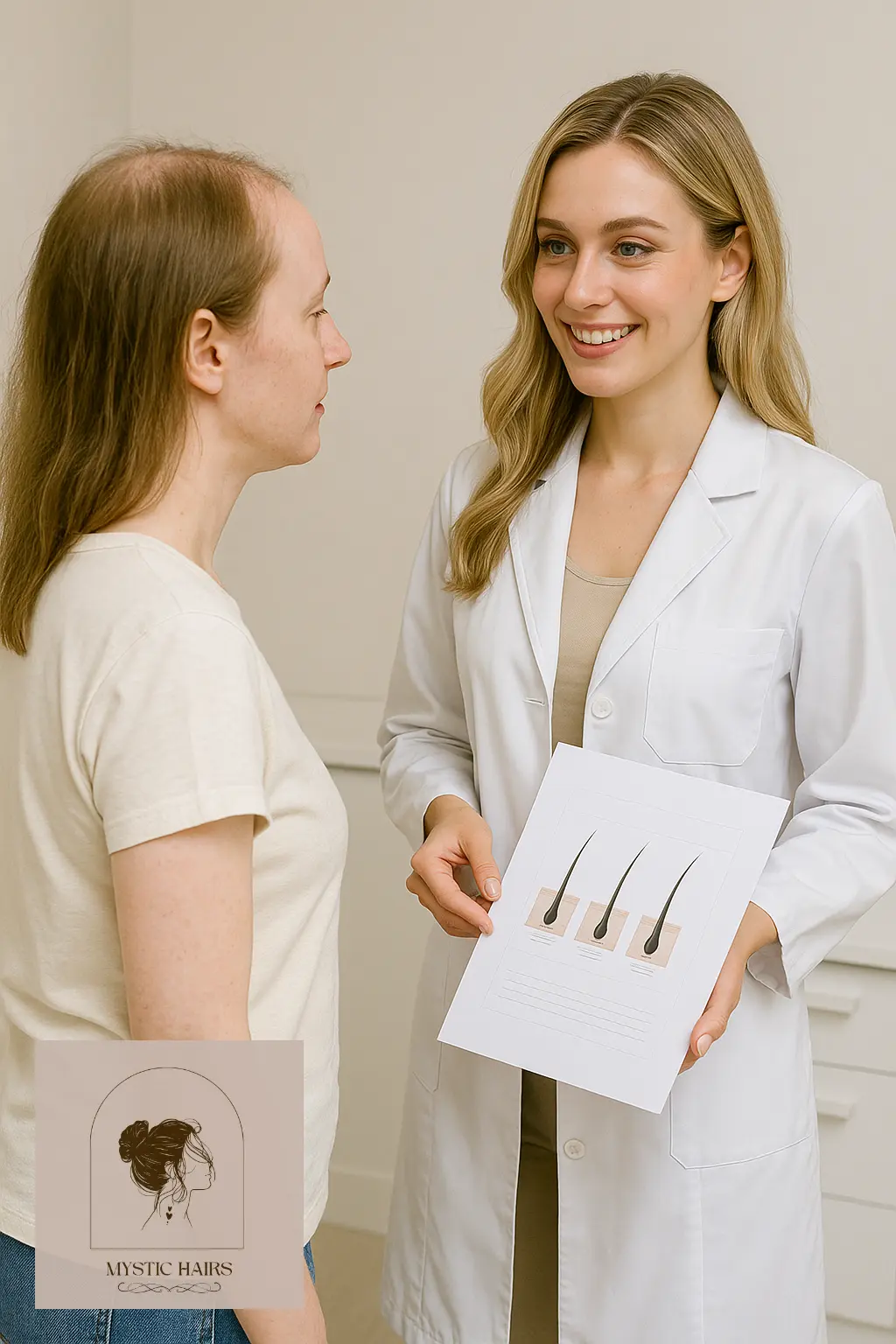
Hair thinning can worsen when strands break off before reaching their full length. That’s why it’s essential to learn how to prevent hair breakage, as it ensures your hair maintains strength and thickness over time.
Bonus Tips for Maintaining Full, Healthy Hair
- Incorporate Scalp Exfoliation: Just like your skin, your scalp can benefit from gentle exfoliation once a week. Use a scalp scrub or a soft-bristle brush to remove dead skin cells and product buildup. This keeps follicles clear and supports hair regrowth tips for women.
- Try Low-Heat Styling: Heat damage is one of the fastest ways to weaken fine strands. If you must use hot tools, lower the temperature and always apply a heat protectant spray.
- Embrace Protective Hairstyles: For women with naturally textured hair, protective styles like twists or loose braids can prevent breakage while promoting female hair loss prevention.
- Don’t Skip Regular Scalp Massages: A 5-minute massage each day can boost circulation, delivering more nutrients and oxygen to your hair follicles.
- Keep Stress Levels in Check: Meditation, yoga, and regular exercise aren’t just good for your mind—they can help balance hormones and reduce shedding linked to chronic stress.
Conclusion
Knowing how to stop thinning hair in women is about combining the right lifestyle choices, proper hair care, and early intervention when necessary. While genetics and aging play a role, many women can slow down or even reverse hair thinning with consistent effort. By nourishing your body from the inside out, protecting your hair from daily damage, and seeking professional help when needed, you can maintain strong, healthy, and voluminous locks at any age.
Remember—patience is key. Hair growth takes time, and the best results often come from a mix of natural remedies, good nutrition, and tailored hair care routines. Whether you start with scalp massages, nutritional support, or protective hairstyles, each step brings you closer to healthier, fuller hair.

Aria Blake is a beauty writer and hairstyle curator passionate about empowering women through timeless trends and modern haircare. With a deep love for natural textures and creative styling, Aria blends expert tips with real-life inspiration to help you look and feel your best—every single day. When she’s not writing for MysticHairs.com, you’ll find her exploring protective styles, sipping herbal tea, or pinning dreamy looks for your next hair glow-up.


